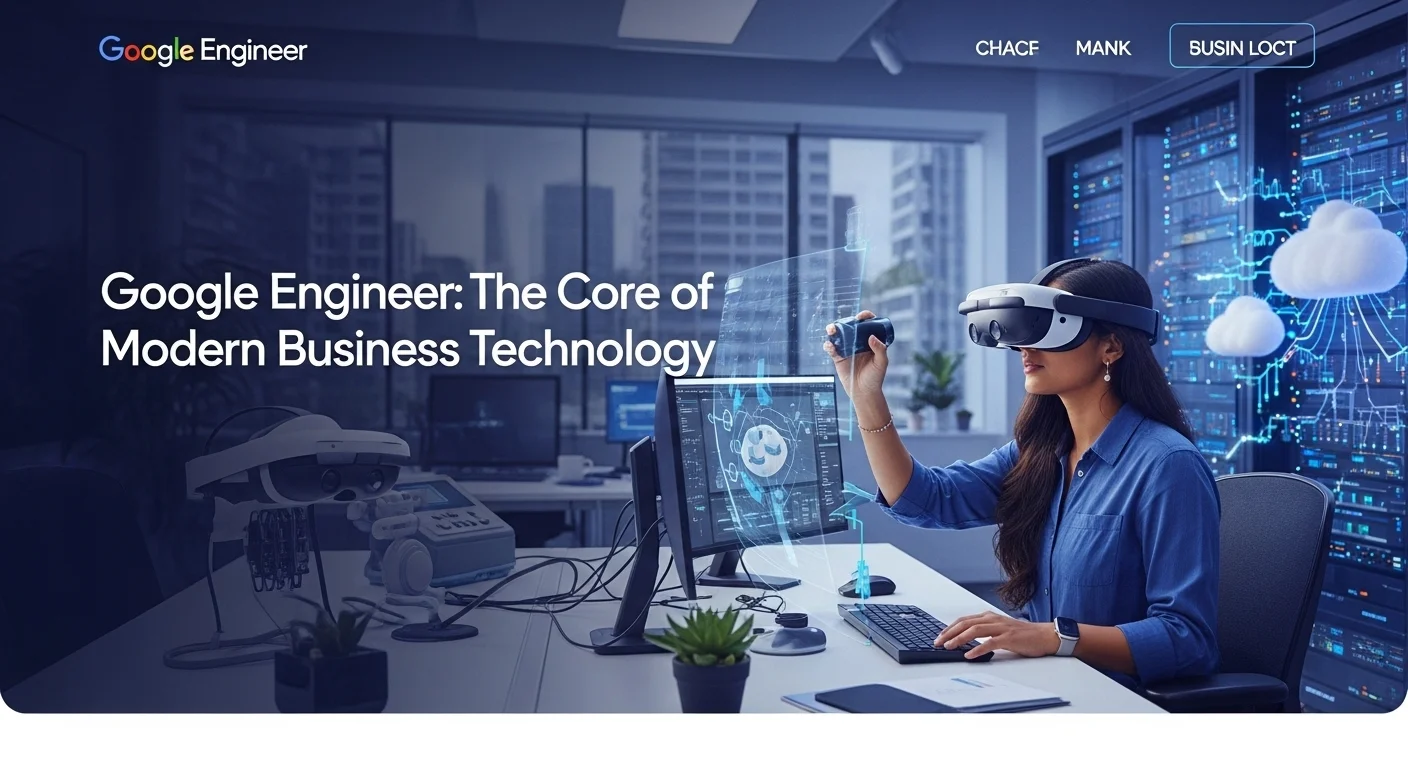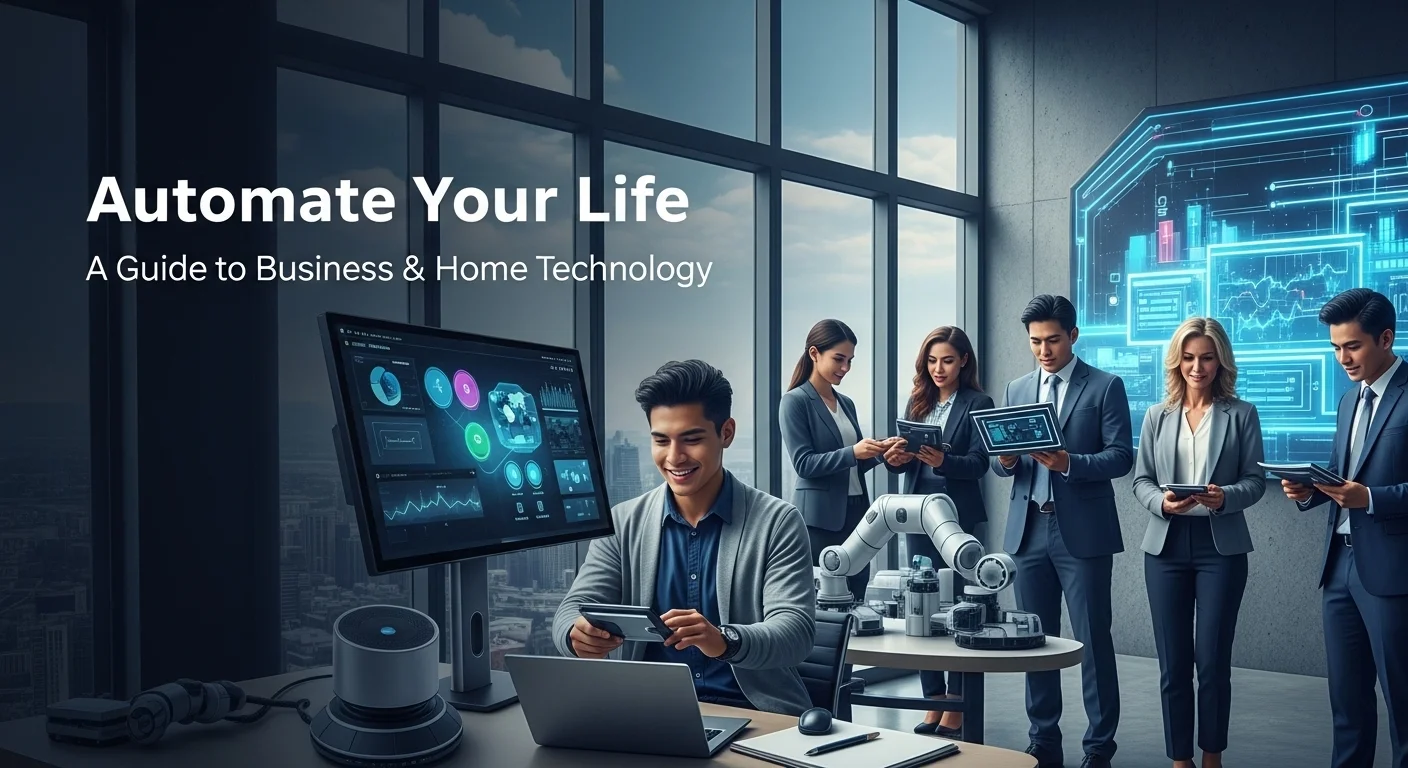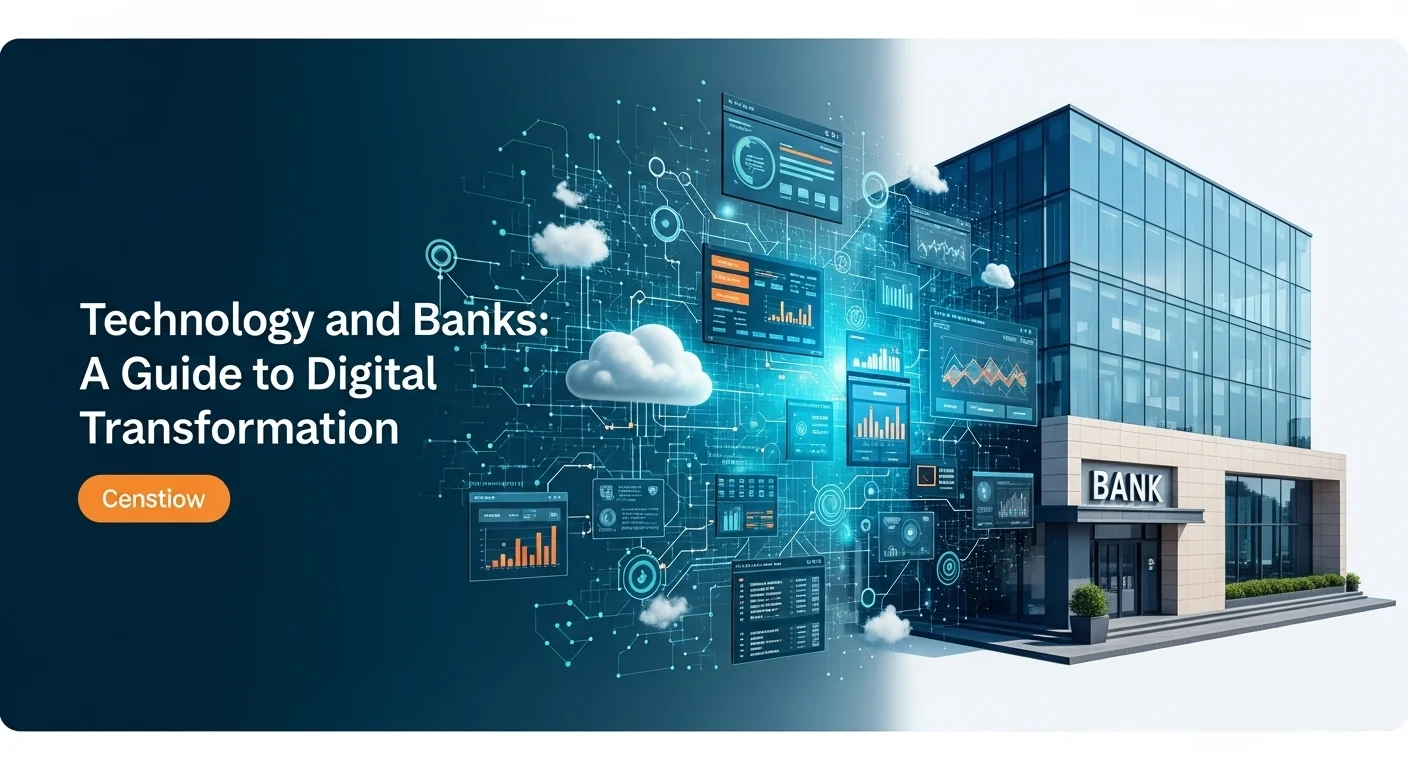What is a Google Engineer? A Look Inside the Tech Powering Your Business

Executive Summary
When you hear the term 'Google Engineer,' it's easy to picture a genius solving impossible problems. And you're not wrong! These are the minds behind the massive infrastructure that runs Google Search, YouTube, and, most importantly for your business, the Google Cloud Platform (GCP). In this article, I'm going to pull back the curtain on what this really means. We'll explore not just the role, but the engineering philosophy that makes their technology so powerful. We'll get practical, breaking down the core of GCP and clarifying the crucial difference between Infrastructure as a Service (IaaS) like Google Compute Engine, and Platform as a Service (PaaS) like Google App Engine. Trust me, understanding this one distinction is the key to unlocking cloud scalability and cost savings. This is a no-nonsense guide for business leaders, IT pros, and anyone curious about how to use Google's world-class engineering to gain a real competitive edge.
Table of Contents
What is a Google Engineer and Why Should You Care?
When you hear the term 'Google Engineer,' what comes to mind? For me, after years in this field, it's not just about coding geniuses in a room full of whiteboards. It represents a specific mindset—a culture obsessed with building systems that are incredibly scalable, reliable, and efficient. These are the people who build and maintain the global nervous system that powers everything from your Google searches to the apps your business relies on. So, the term really has two meanings: it's the professional role, yes, but it's also a gold standard in technology. Understanding this standard is vital for any business that wants to build and grow in today's digital world.
At its heart, a Google Software Engineer is tasked with creating the technology that changes how we all interact with data. They work on everything from sprawling distributed systems and AI to the intricate networks that connect the globe. The scale of their work is hard to comprehend; they're not just writing code, they're engineering solutions designed to serve billions of people with near-zero downtime. This culture of relentless innovation and improvement is precisely what makes Google's technology—and by extension, the tools available to you—so incredibly powerful and dependable.
The Technological Cornerstone: Google Cloud Platform (GCP)
For the business world, the most direct result of this engineering excellence is the Google Cloud Platform (GCP). Think of GCP as getting direct access to the powerhouse Google built for itself. When your business uses GCP, you're tapping into two decades of experience in creating one of the world's most advanced computer networks. In my experience, this translates into game-changing performance, security, and scalability for companies of all sizes. GCP isn't just one thing; it's a massive toolbox that includes Infrastructure as a Service (IaaS), Platform as a Service (PaaS), and more, giving you everything you need for app development, data storage, and machine learning.
To really make GCP work for you, you have to understand its core service models: IaaS and PaaS. They offer different levels of control and management, and choosing the right one can make or break your project's budget and timeline. One of the most common points of confusion I see newcomers run into is mixing these up. For instance, I often see people searching for things like google app engine iaas, but that's a misunderstanding. App Engine is a classic PaaS, while Google's IaaS offering is Google Compute Engine. Getting this distinction right is the first, most important step in building a smart cloud strategy.
IaaS vs. PaaS: A Critical Distinction in the Cloud
Let's make this simple. To make smart choices, you need to know the difference between Infrastructure as a Service (IaaS) and Platform as a Service (PaaS).
Infrastructure as a Service (IaaS) is like leasing the foundational building blocks. You get virtual servers, storage, and networking, all on a pay-as-you-go basis. You rent the hardware from Google, giving you maximum flexibility and control, much like having your own on-premise servers but without the physical hardware headaches. You're in charge of the operating system, middleware, and your applications. The perfect example of this is google compute engine iaas. It lets you spin up virtual machines (VMs) whenever you want, giving you complete command over your computing environment.
Platform as a Service (PaaS), on the other hand, is about convenience. It provides a ready-made platform where you can develop, run, and manage your apps without worrying about the underlying infrastructure. The cloud provider handles all the boring stuff—servers, operating systems, patches. You just focus on writing great code. This model drastically speeds up development. It's universally understood that google app engine and microsoft azure are examples of powerful PaaS offerings that let developers innovate faster, although both have grown to offer a full suite of cloud services.
A Closer Look at Google Compute Engine (IaaS)
As Google's main IaaS product, Google Compute Engine (GCE) lets you build and run VMs on the same infrastructure that powers Google itself. I recommend GCE for workloads where you need fine-grained control, like for custom software, legacy applications, or specific OS needs. The flexibility is immense. You can pick from tons of predefined machine types or create your own custom ones, so you only pay for the exact vCPU and memory you need. It supports all the popular Linux flavors and Windows Server, so you're covered no matter your stack.
Of course, for any business, cost is king. The google cloud compute engine pricing is built to be fair and flexible. GCE bills you per second after the first minute, so you truly only pay for what you use. But the real savings come from their discount models. Google automatically applies 'Sustained Use Discounts' for long-running workloads. If you know you'll need the capacity, 'Committed Use Discounts' for 1 or 3-year terms offer even bigger savings. And for tasks that can be interrupted, like batch processing, Spot VMs can save you up to 91%. This flexible pricing is what allows businesses, from tiny startups to huge enterprises, to optimize their IT spend.
Understanding Google App Engine (PaaS)
Google App Engine (GAE) is a fully managed, serverless platform designed to make hosting web applications incredibly simple. As a PaaS, it takes all the infrastructure management off your plate. You just upload your code, and App Engine automatically handles server provisioning, scaling up or down with traffic, and load balancing. This is precisely why any claim that the google app engine platform is iaas offering is simply wrong. Its entire value is based on removing the need to manage infrastructure, which is the definition of PaaS.
App Engine is also incredibly developer-friendly, supporting popular languages like Python, Java, Node.js, Go, and more. It offers two flavors: Standard and Flexible. The Standard environment is perfect for apps that need to scale from zero to massive traffic instantly. The Flexible environment uses Docker containers, giving you more control and access to the underlying OS. The business benefit here is speed. Your team can focus on building features, not managing servers. This agility means you can innovate and react to the market faster. The confusion around google app engine iaas usually comes from not realizing that while GAE runs on Google's IaaS, the service you're buying is the platform, not the raw infrastructure.
Business Applications and Strategic Benefits
So, what does all this tech mean for your bottom line? The tools built by Google Engineers are designed to help you achieve your strategic goals. For a small or medium-sized business, Google Cloud is a game-changer. It gives you access to enterprise-level infrastructure without the massive upfront cost, leveling the playing field. Studies have shown it can cut IT infrastructure costs and dramatically improve team efficiency.
For large enterprises, the benefits are about scale, data, and innovation. You can use Google's global network to serve customers anywhere with low latency. Tools like BigQuery, a serverless data warehouse, let you analyze huge datasets to uncover business-critical insights. By letting Google handle the infrastructure, your own engineers are freed up to innovate and build what's next for your company. Whether you're running a massive batch job on Compute Engine or launching a viral web app on App Engine, the work of the Google Engineer is what empowers your business to operate smarter, decide faster, and out-innovate the competition.

Complete Guide to Google Engineer Tech and Business Solutions
Alright, you've got the basics down. Now let's roll up our sleeves and see how this works in the real world. Moving from theory to practice with Google Cloud is like being handed the keys to a high-performance engine. The solutions created by Google Engineers are built to unlock business potential. In this guide, we'll go deeper into the technical nuts and bolts, business strategies, and direct comparisons to help you navigate this powerful ecosystem. The goal here is to give you the confidence to make the right strategic decisions for your projects, whether you're writing the code or signing the checks.
Technical Deep Dive: App Engine vs. Compute Engine
One of the first big decisions you'll make on GCP is choosing between Google App Engine and Google Compute Engine. It's the classic PaaS vs. IaaS dilemma, a trade-off between developer ease-of-use and raw infrastructure control.
Deploying on Google Compute Engine (IaaS):
When you go with the google compute engine iaas model, you're in the driver's seat. Here’s what that journey typically looks like:
1. Setup: You start with a Google Cloud project.
2. Create a VM: In the Compute Engine dashboard, you create a virtual machine. This is where you make key decisions: region (for latency), machine type (CPUs and RAM), etc.
3. Choose an OS: You pick a boot disk, like a standard Linux (Debian, Ubuntu) or Windows Server image.
4. Configure: You set up firewall rules to control traffic and SSH keys for secure access.
5. Install Everything: You connect to your new VM and manually install your web server (like Nginx), database, application code, and all its dependencies.
6. Manage and Maintain: You deploy your code. From here on out, you are responsible for everything: security patches, updates, and monitoring. Scaling means either doing it manually or configuring automated instance groups.
This path gives you ultimate flexibility, but it's also the most work. It's the right call for apps with unique requirements or when you're migrating a complex legacy system to the cloud.
Deploying on Google App Engine (PaaS):
Deploying to App Engine feels like a completely different world. It’s incredibly streamlined:
1. Setup: Again, you start with a Google Cloud project.
2. Code & Configure: You write your application and create a simple `app.yaml` configuration file. This file tells App Engine what language you're using and how to handle scaling.
3. Deploy: You run a single command in your terminal: `gcloud app deploy`.
4. Google Takes Over: That's it. App Engine builds the environment, deploys your app, and starts routing traffic to it. It handles all the scaling, load balancing, and even versioning for you, making things like A/B testing a breeze.
This PaaS model makes deployment and operations incredibly simple. The trade-off is that you operate within the boundaries Google sets. This is why any talk of google app engine iaas is confusing; you are intentionally giving up infrastructure control for the managed convenience of a platform.
Comparative Analysis: Google Cloud vs. Competitors
In the cloud arena, it's a three-horse race: Google Cloud Platform (GCP), Amazon Web Services (AWS), and Microsoft Azure. I've worked extensively with all three, and each has its strengths.
When you're comparing, it helps to map the services. For instance, both google app engine and microsoft azure are examples of mature PaaS offerings. The direct competitor to Google App Engine in Azure is Azure App Service. Both aim to make web app deployment painless. In my experience, GAE often feels simpler and has incredibly powerful auto-scaling right out of the box. Azure App Service can sometimes offer more granular control but requires a bit more setup with its 'App Service Plans.' It's a matter of preference.
In the IaaS space, google compute engine iaas goes head-to-head with Amazon EC2 and Azure Virtual Machines. All three are fantastic. GCE has always impressed me with its powerful global network, high performance, and smart pricing like per-second billing and automatic discounts. AWS has the advantage of being the oldest and having the largest market share and service variety. Azure shines in the enterprise space, especially for companies deeply invested in the Microsoft ecosystem. The best choice really depends on your specific needs, your team's skills, and which pricing model works best for your use case.
Mastering Cost: A Deep Dive into Pricing Models
Let's talk money. If you're not careful, your cloud bill can be a nasty surprise. Mastering the nuances of google cloud compute engine pricing is a critical skill for any cloud professional.
Let's imagine you're running a small web server on GCE:
* Instance: e2-standard-2 (2 vCPUs, 8 GB RAM) in the `us-central1` region.
* On-Demand Price: Roughly $0.067/hour, which comes out to about $49 per month.
But you should almost never pay the full on-demand price:
* Sustained Use Discount: Just by leaving it on for the whole month, Google automatically cuts the price by up to 30%. Your bill is now closer to $34.
* 1-Year Commitment (CUD): If you commit to using it for a year, the price drops by over 40%, making your monthly cost around $28.
* 3-Year Commitment (CUD): For maximum savings on a predictable workload, a three-year commitment can slash the cost by over 60%, bringing it under $20 a month.
* Spot VM: If your work is fault-tolerant, you could use a Spot VM. The price could be as low as $0.02/hour. The catch? The instance can be shut down with 30 seconds' notice. Perfect for non-critical processing jobs.
This shows how making strategic choices can dramatically lower your costs. The key is matching the pricing model to your workload's predictability.
Debunking a Common Misconception: The PaaS vs. IaaS Fallacy
I want to circle back and really hammer this point home: the idea that the google app engine platform is iaas offering is a fundamental misunderstanding. Yes, on a physical level, all PaaS services run on IaaS. Google runs App Engine on its own massive infrastructure. But the *product* you buy is the platform, not the infrastructure.
Here’s the best analogy I've found: IaaS is like renting a professional kitchen. You get the space, the ovens, the tools (servers, networking), but you have to bring your own ingredients and do all the cooking yourself. PaaS is like ordering a pizza. It arrives ready to eat. The pizza place used a professional kitchen (IaaS) to make it, but you just get the delicious, finished product. The entire point of App Engine is that you *don't* have to manage the kitchen. This abstraction is what separates it from an IaaS service like Google Compute Engine.
Available Resources for Businesses and Developers
Google wants you to succeed and provides a ton of resources to help:
* Google Cloud Skills Boost: An amazing online learning platform with courses and hands-on labs to get you up to speed. The Cloud Engineer Learning Path is a great place to start.
* Certifications: The Associate Cloud Engineer and Professional Cloud Architect certifications are highly respected in the industry and can validate your skills.
* Documentation: Google's official docs are incredibly thorough, with tutorials and guides for everything.
* Community: Google Developer Groups (GDGs) and events like Google Cloud Community Days are fantastic for networking and learning from others in the field.
* Free Tier & Credits: GCP has a generous free tier, including a free micro VM on Compute Engine, and new customers get free credits to experiment with the platform. Don't be afraid to use them!
By using these resources, you can shorten your learning curve and start building powerful, cost-effective solutions on the same technology built by Google's world-class engineers.

Tips and Strategies: Think Like a Google Engineer to Improve Your Tech Experience
To truly master Google Cloud, you need to do more than just use its services—you need to adopt the mindset of the engineers who built it. This means focusing on automation, scalability, security, and efficiency in everything you do. In this section, I'll share some practical tips and advanced strategies to help you operate like a Google Engineer. We'll cover how to build solutions that are not only powerful but also secure, resilient, and cost-effective, from advanced cost-saving tricks to modern security and DevOps practices.
Best Practices for Cost Optimization
Cloud cost management is a continuous process, not a one-time setup. I tell all my clients to implement these practices from day one to avoid bill shock.
1. Right-Size Your Instances: Overprovisioning is the #1 source of wasted money in the cloud. Don't guess what resources you need. Use Google Cloud's built-in Rightsizing Recommendations. It analyzes your VM's usage and suggests cheaper machine types that won't hurt performance. This is crucial for managing google cloud compute engine pricing effectively.
2. Automate Shutdowns: Your dev and test environments don't need to run 24/7. Use Cloud Scheduler to automatically stop these VMs at night and on weekends. This simple trick can cut your non-production costs by over 70%.
3. Use Spot VMs Smartly: Spot VMs are not just for simple batch jobs anymore. You can use them for the worker nodes in a Kubernetes cluster or for stateless web frontends. By mixing a few on-demand instances with a majority of Spot VMs, you can build a highly-available architecture at a fraction of the cost.
4. Analyze Your Storage: Storage costs can silently grow over time. Set up Object Lifecycle Management on your Cloud Storage buckets. This can automatically move data to cheaper storage classes (like Nearline or Coldline) as it gets older. For example, automatically archive logs after 30 days.
5. Set Budgets and Alerts: This is non-negotiable. Go into Google Cloud Billing and set a monthly budget for your projects. Configure alerts to email you when you hit 50%, 90%, and 100% of your budget. This simple step prevents surprises and keeps everyone accountable.
Enhancing Your Security Posture
Google secures the cloud, but you are responsible for securing what's *in* the cloud. It's a shared responsibility, and adopting a security-first mindset is essential.
1. Embrace Least Privilege: When setting up IAM (Identity and Access Management), always grant the absolute minimum permissions needed for a person or service to do its job. Avoid broad roles like Owner or Editor. Be specific.
2. Lock Down Your Network: Use VPC firewall rules to control traffic. By default, everything is denied, which is a good thing. Only open the specific ports you absolutely need (like port 443 for HTTPS). For communication between your VMs, use internal IPs instead of exposing them to the internet.
3. Use Service Accounts Securely: An application running on a google compute engine iaas instance should never have a private key file embedded in its code. Instead, it should use the attached service account to authenticate securely with other Google Cloud services.
4. Use Private Google Access: If your VMs need to talk to Google APIs (like Cloud Storage) but don't need general internet access, enable Private Google Access. This lets them connect to Google services without a public IP, shrinking your attack surface.
5. Activate Security Command Center (SCC): Turn on SCC for your organization. It's a central dashboard that scans for misconfigurations, vulnerabilities, and threats, helping you find and fix risks before they become problems.
Adopting Modern DevOps and CI/CD Practices
Automation is at the heart of Google's engineering culture. A solid CI/CD (Continuous Integration/Continuous Deployment) pipeline is essential for moving fast without breaking things.
1. Infrastructure as Code (IaC): For any production system, do not configure things manually in the web console. I can't stress this enough. Use a tool like Terraform to define your infrastructure in code. This makes your setup repeatable, version-controlled, and auditable. You can create a module for a secure google compute engine iaas instance and reuse it everywhere.
2. Build a CI/CD Pipeline with Cloud Build: Use Cloud Build to automate your entire process. A developer pushes code, which triggers Cloud Build to run tests, build a Docker container, push it to Artifact Registry, and then deploy the new version to Google Kubernetes Engine or Cloud Run. It's a beautiful, hands-off process.
3. Choose the Right Compute Platform for DevOps: Honestly, the old IaaS vs. PaaS debate is becoming less relevant. For many modern applications, the conversation has moved on. We're no longer just asking if the google app engine platform is iaas offering, but what level of abstraction is best. For containerized apps, serverless platforms like Cloud Run are often the answer. It gives you the ultimate simplicity, allowing you to deploy a container and pay only when it's actively handling requests.
Rethinking Platform Choices: Beyond the Old Debates
While the classic comparison is App Engine vs. Compute Engine, the cloud has evolved. Today, Cloud Run is changing the game. It takes any container and runs it as a scalable, serverless service. This combines the best of both worlds: the portability of containers and the zero-ops, pay-per-use model of serverless computing. A developer doesn't need to wonder if google app engine iaas is a thing; they just provide a container, and Google runs it. For many, this is simpler and more flexible than both App Engine Standard and Flexible environments.
This evolution is happening across the industry. The comparison that google app engine and microsoft azure are examples of platforms that have grown is accurate. Azure's modern answer to this is Azure Container Apps, which also focuses on running serverless containers. As a modern cloud professional, you should think less in rigid categories and more along a spectrum of abstraction, picking the service that gives you the perfect balance of control and convenience for each job.
For a much deeper dive, I highly recommend reading the Google Cloud Architecture Framework. It's an invaluable resource filled with Google's own best practices. Embracing these strategies won't just improve your tech, it will drive real business value and help you build solutions that are engineered for success.
Expert Reviews & Testimonials
Sarah Johnson, Business Owner ⭐⭐⭐⭐
As a business owner, this was a helpful overview. I finally get the difference between the cloud services. I would have loved a few more real-world case studies for small businesses like mine, but it's a great start.
Mike Chen, IT Consultant ⭐⭐⭐⭐⭐
Solid article. As an IT consultant, I often have to explain these concepts to clients. This piece breaks down IaaS vs. PaaS perfectly. The section on pricing was particularly useful for our discussions.
Emma Davis, Tech Expert ⭐⭐⭐⭐⭐
Fantastic deep dive! This is one of the clearest explanations of Google's core engineering philosophy and how it translates to GCP services. It's a must-read for anyone specializing in cloud tech. Perfectly explained.



